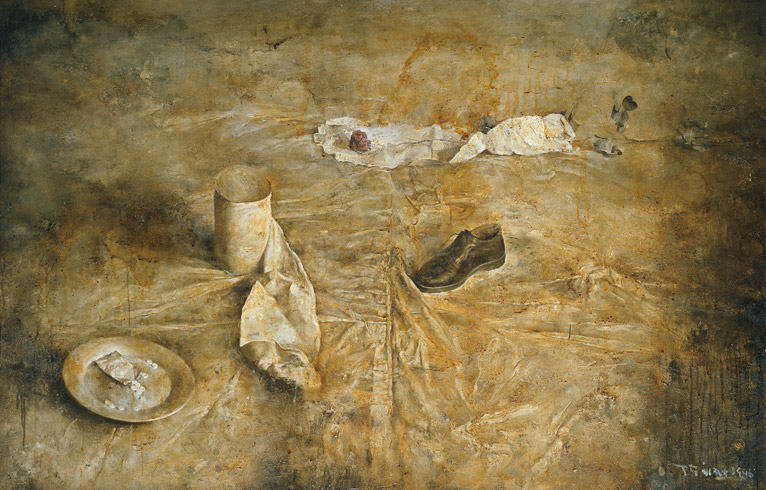2010 CHEN WENJI
| March 18, 2011 | Post In LEAP 7

Chen Wenji’s solo exhibition, held by the Central Academy of Fine Arts, is divided into two parts; the main gallery features his most recent work, while the secondary space displays his early works. It is clear that the curator chose this layout in order to linearly showcase the evolution of Chen Wenji’s comprehensive body of work, which spans a period of over twenty years. This approach, albeit a conservative one, successfully sheds light on Chen Wenji’s long-term obsession with the pursuit of form qua form.
While the side gallery may host concrete, realist paintings, the main hall’s selection makes a “picture-book reading” difficult. Geometric works like this are self-referential: under “referential” lighting, detailed image-objects withdraw into bright hues; the colors speak their own truth, and the light either prompts this truth to burst out suddenly, or coaxes it to cast its shadow tactfully. Using color and light to refine and manipulate, Chen Wenji puts a halt to the audience’s habitual thought processes—restraining our inclination to penetrate works of art right to their core. He ceaselessly reminds us of Oscar Wilde’s words that “the true mystery of the world is the visible, not the invisible.” Indeed, because Chen Wenji’s new works do not make external references, customary modes of interpretation fail; but after viewing the two gallery spaces in conjunction with one another, a perceptive audience can still grasp the consistencies inherent in Chen Wenji’s visual style and practice: exquisite depiction, physical, almost tangible surfaces, and a calm, elegant temperament.
The curious thing is that many of the critical texts included in the exhibition program all but completely neglected to touch upon these main gallery works. Evidently, not only the general audience but also professional critics curb their propensity towards explanation when they confront these works. The critics’ approaches to his old works—a kind of painstaking research methodology akin to iconology—seems out of date in the face of Chen Wenji’s current practice. In a lecture given on behalf of his solo exhibition, Chen Wenji explained that he actually held no revolutionary ambitions, and that he was simply following the call of his own inner voice, in search of purity of form—a reference to Li Xianting’s essay, “Chen Wenji’s paintings and A Quiet Revolution.” The significance which critic Li Xianting attaches to Chen Wenji’s works, coupled with the artist’s rejection of it altogether, seem like some kind of joke. But the interaction between the two actually presents an important theoretical problem. In 1985 Li Xianting emphasized the notion that “the important thing [was] not the art,” and insisted that art was a “tool” for the liberation of thought—a “statement.” This seemingly thorough plea for the case of Chen Wenji’s art actually serves only to tell us what his works “are saying” and not what they are!
During the incomplete linguistic turn of the 1900s, the art world hastily switched from emphasizing enlightenment to indiscriminately applying cultural sociology; out of this arose the inevitable popularity of vulgar sociology. Given this context, it is unnecessary to restate the great significance of Chen Wenji’s new work. Over the course of over twenty years of creation, Chen Wenji has kept to the fringe, maintaining the clearheaded sobriety of an artist. In an atmosphere in which it is customary to regard form as the cuticle layer of content, he uses his works to let everyone know: form is content. At a time when a wave of artists play the part of philosopher and sociologist, Chen Wenji holds fast to the identity of a painter—in his words, “I just paint.” Liu Libin

